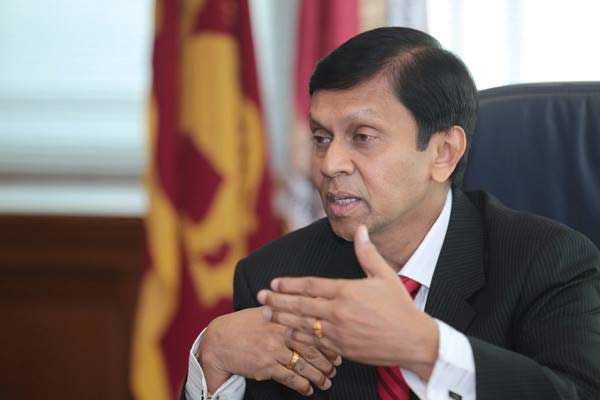Ajith Nivard Cabraal ‘will address external challenges’

COLOMBO: Sri Lanka’s reappointed central bank governor will be giving leadership to address prevailing challenges including foreign exchange rates and lower reserves, President’s Secretary P B Jayasundera said in a report published by Economy Next.
Former State Minister for Money and Capital Markets Ajith Nivard Cabraal assumed duty as the 16th central bank governor this week.
He held the same post from 2006-2015 and led the central bank in transforming Sri Lanka’s economy from a lower income to middle income economy in the post-war growth.
Jayasundera, former finance secretary during Cabraal’s previous tenure as the governor and the country’s top most public official, said the central bank needed an experienced leadership.
“I think it is good in a way because while the previous governor (W.D. Lakshman) was giving a leadership for a policy ideology,” Jayasundera was quoted as saying by Economy Next.
“It also needs much more experienced person to manage the prevailing challenges. Nivard Cabraal is almost 10-year experienced governor.”
Under the previous tenure Cabraal focused on foreign exchange stability and gave some confidence to the market through maintaining the exchange rate consistently around 110-113 same rate for longer period, as an East Asia style external anchor for domestic stability.
However in 2011, a rate cut in April and subsequent liquidity injections to prevent interest rate rise amid strong private credit and credit financed losses at state energy enterprises amid a drought led to a collapse of the exchange rate to 131 in 2012 as policy corrections were made.
In the credit downturn that followed he built net reserve to 148 percent of money supply by September 2014, when liquidity releases started again as the private credit recovered.
It was Cabraal who started to borrow from international capital markets through a debut 500 million dollar sovereign bond sale in 2007. When Cabraal left the agency in 2015, about 5 billion US dollars in sovereign bonds had been sold.
Jayasundera said the country’s current challenges of lower foreign exchange inflows and reserves need to be addressed.
“These challenges have to be addressed,” Jayasundera said.
“I think he will get treasury, central bank coordination more effectively and give leadership in the central bank to address these challenges.”
A central bank is a note issuing bank which can build reserves and keep the exchange rate stable if domestic currency (and interest free IOU or banknote) is issued only against foreign reserves (an unsterilized purchase of foreign exchange), allowing short term rates to fluctuate.
It can built reserves larger than the note issue if securities held by the agency are sold to the banking system to mop up bank notes created against foreign exchange (a sterilized foreign exchange purchase).
If a central bank gives loans to the domestic economy, either by purchasing Treasury bills from the Treasury or banks with new domestic currency, or give re-finance to commercial banks, it will lose the foreign reserves when the notes are redeemed to maintain an exchange rate as the recipients of the bank notes spend them on imports.
If convertibility is suspended (the exchange rate is not defended) the exchange rate will fall.
The central bank suspended convertibility for trade transactions as it ran out of reserves to redeem the newly printed money making the rupee fall to close to 230 to the US dollar by early September 2014. (Colombo/Sept 15/2021)
